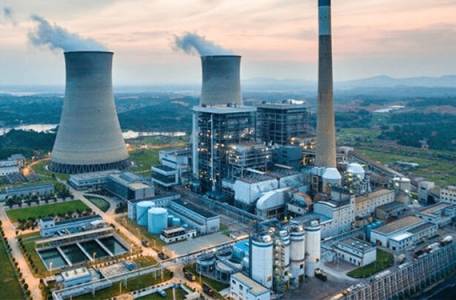Description
Kalpakkam Nuclear Power Plant: A Deep Dive into India's Nuclear Energy Program
The Kalpakkam Nuclear Power Plant, located in Kalpakkam, Tamil Nadu, India, represents a significant milestone in the nation's pursuit of nuclear energy independence and technological advancement. More than just a power plant, it's a complex encompassing research, development, and power generation, all under the umbrella of the Indira Gandhi Centre for Atomic Research (IGCAR).
Key Features & Components:
- Madras Atomic Power Station (MAPS): This is the operational power generation arm of Kalpakkam, currently consisting of two Pressurized Heavy Water Reactors (PHWRs).
- Unit 1 & 2: These are 220 MWe PHWRs, employing natural uranium fuel and heavy water as both moderator and coolant. These units represent a mature and proven technology, providing a reliable baseload power source for the national grid.
- Fast Breeder Test Reactor (FBTR): A pioneering facility, the FBTR is a 40 MWe fast breeder reactor (FBR). This reactor is crucial for India's ambitious three-stage nuclear power program. It utilizes plutonium-239 as fuel, demonstrating the potential to breed more fissile material than it consumes, significantly extending the lifespan of nuclear fuel resources. The FBTR's successful operation has been instrumental in paving the way for future large-scale FBR deployment.
- Prototype Fast Breeder Reactor (PFBR): Currently under construction, the PFBR is a 500 MWe fast breeder reactor designed to demonstrate the commercial viability of FBR technology on a larger scale. Its successful commissioning will mark a substantial leap forward in India's nuclear power capabilities.
Technological Significance:
Kalpakkam's significance transcends mere power generation. It serves as a vital center for:
- Nuclear Fuel Cycle Research: Research and development activities at IGCAR encompass the entire nuclear fuel cycle, from uranium mining and enrichment to spent fuel reprocessing and waste management. This self-reliance is a key strategic objective for India.
- Advanced Reactor Technology Development: The FBTR and PFBR projects are pushing the boundaries of reactor technology, exploring innovative designs and materials to enhance safety, efficiency, and sustainability.
- Human Resource Development: Kalpakkam houses a dedicated training institution, fostering a highly skilled workforce essential for the continued growth and safety of India's nuclear program.
Safety and Environmental Considerations:
India maintains stringent safety regulations and international collaborations for nuclear safety. The Kalpakkam plant incorporates multiple layers of safety systems and adheres to rigorous safety protocols to minimize the risk of accidents and ensure environmental protection. Spent fuel management and waste disposal are also subject to strict regulations and ongoing research.
Future Prospects:
Kalpakkam is poised for continued expansion and development. The successful commissioning of the PFBR will be a major turning point, paving the way for a broader deployment of FBR technology and potentially transforming India's energy landscape. Further research and development efforts are focused on improving reactor efficiency, minimizing waste, and enhancing safety features. Kalpakkam stands as a testament to India's commitment to sustainable and independent energy solutions.
